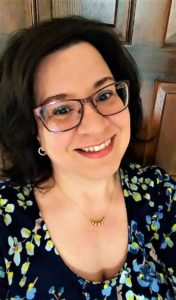 My husband, Marc, and I made it out to Lake Mary this weekend. First, a disclaimer: I grew up in upstate New York, about two miles from Lake Ontario. So, I am a “lake snob” for sure. But since visiting the upper falls of Lake Mary last spring during the snow melt, I’ve come to appreciate the charms of a small-ish lake surrounded by forest, hills and quaint picnic areas.
My husband, Marc, and I made it out to Lake Mary this weekend. First, a disclaimer: I grew up in upstate New York, about two miles from Lake Ontario. So, I am a “lake snob” for sure. But since visiting the upper falls of Lake Mary last spring during the snow melt, I’ve come to appreciate the charms of a small-ish lake surrounded by forest, hills and quaint picnic areas.
This day brought us out to the Osprey Lookout where a recent eagle watch was canceled due to our recent snowstorms. We couldn’t help but think we might see eagles and osprey on this particular Saturday, especially since birds don’t adhere to any human calendars. We made our way down the steep and muddy trail to find part of the lake unfrozen. Marc captured some beautiful images of the moon in the pale blue sky while I picked my way over muddy rocks to take photos of…mud and rocks.
When I fell in love with bird watching a few years ago, I imagined that I would become a bird expert, telling friends at every moment what they might be seeing in the sky or poised on the branches of their rose bushes. Instead, I find myself still only committing a few birds to my identification repertoire. Take me up to Kachina Wetlands, and I’ll show you a kestrel. Take me anywhere else, and I’ll tell you about that cute brown bird over there.
I haven’t taken photos of birds for a while now. In part because my camera is quite basic and refuses to capture the beautiful birds that I see with my eyes. My bird images come out shaky and unclear. Even though Marc showed me how to focus better, I enjoy observing the bird to remember what it looks like rather than trying to snap the perfect photo. I leave that to Marc now, whose bird images rival those of the best nature magazines, in my humble opinion.
Instead, I spend most of my time in nature with my camera lens touching the tip of a rock, a flower, or a blade of grass. It’s a way of capturing the habitat of the birds I enjoy watching, but it has become something more to me. It’s become a way of slowing down and considering each tiny molecule that makes up each piece of nature I encounter. I joke and call each series “dead things [insert location].” Such as “Dead Things at Lake Mary” or “Dead Things in My Neighborhood”.
When did capturing images of dead things become more important than the living parts of nature? It seems to have become a preoccupation through the past few years. There was the summer I spent capturing lilacs and our small sunflower-like yellow flowers around Flagstaff. But those yellow flowers gave way to the most interesting seed pods, almost alien-like in appearance. Against the blue-gray skies of winter, they seemed more beautiful to me than at the height of their summer bloom.
Dead things in nature seem more akin to what I’ve been feeling the past few years. I’ve read everything I can about burn out, including prettier phrases of wintering and languishing. In actuality, nothing is beautiful about constant exhaustion from the pandemic and pretending that we’ve returned to normal. There’s a new world that I belong to that appreciates the cycle of life more than the most beautiful parts. I’ve often heard the expression that we need darkness to appreciate light, but what if I just appreciate the darkness? What if the desiccated pinecone or the dried sap on a ponderosa tree or the dead flowers are beautiful in and of themselves? As I pulled my booted feet from the sucking mud on Saturday, it felt like the on-the-nose metaphor of what the past few years have been like.
I didn’t spend any time looking up at the sky, but rather kept my nose close to the ground, forgetting completely to look for eagles and osprey. Instead, I took photos of tiny plants growing between the rocks on the shore of the lake, the dead grasses and plants leading down to the shore, and the fallen tree trunks with their years revealed in the perfect cutaways through their trunks. Somehow, I found half a clamshell as well, which will send me on an internet rabbit hole soon to discover if clams live in Lake Mary, if someone used clams as bait or if someone made supper on the shore.
Returning from our adventure, we spotted two bald eagles and parked the car by the side of the road. Marc was so happy to take photos of the birds at rest and in flight. When we got home, we sat on the sofa and compared photos: his of beautiful birds and mine, dead things. But I spent over an hour looking at each dead thing and marveling at how beautiful nature is in its decay.
I’m reminded of a site on Instagram that advocates returning to nature, often by spending so much time in the forest that one is reabsorbed into the earth. I’m not ready to be absorbed just yet, but perhaps I’ll make myself small and cuddle up in the clamshell at Lake Mary. I’ll use the downy remains of a thistle as my pillow and hope for some dried leaves as my blanket. I’ll fall asleep to the sound of the wind through the ponderosa boughs and wait until the ground is a little drier before my next adventure.

